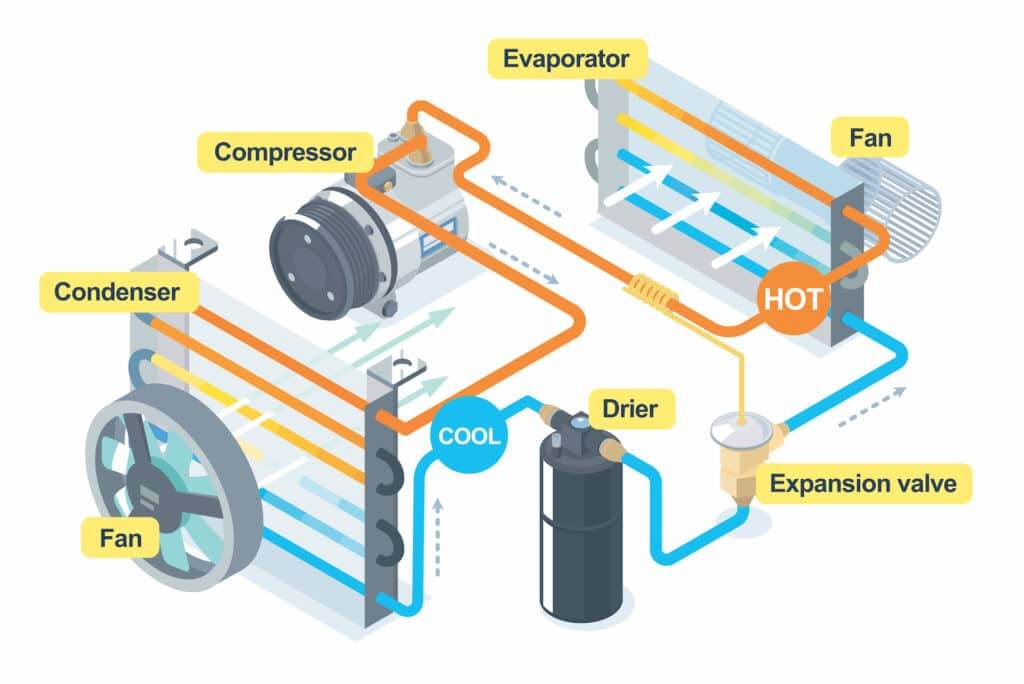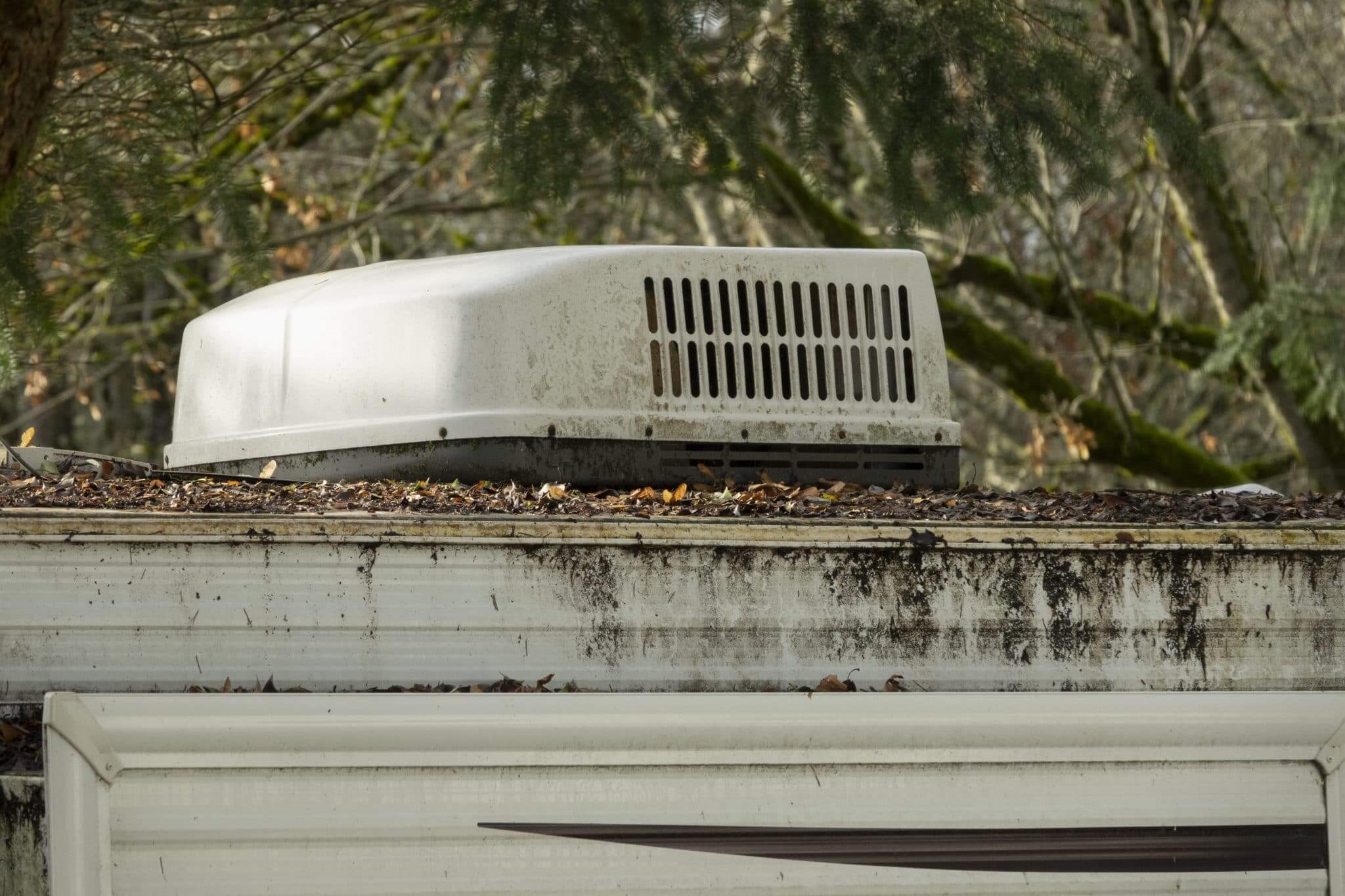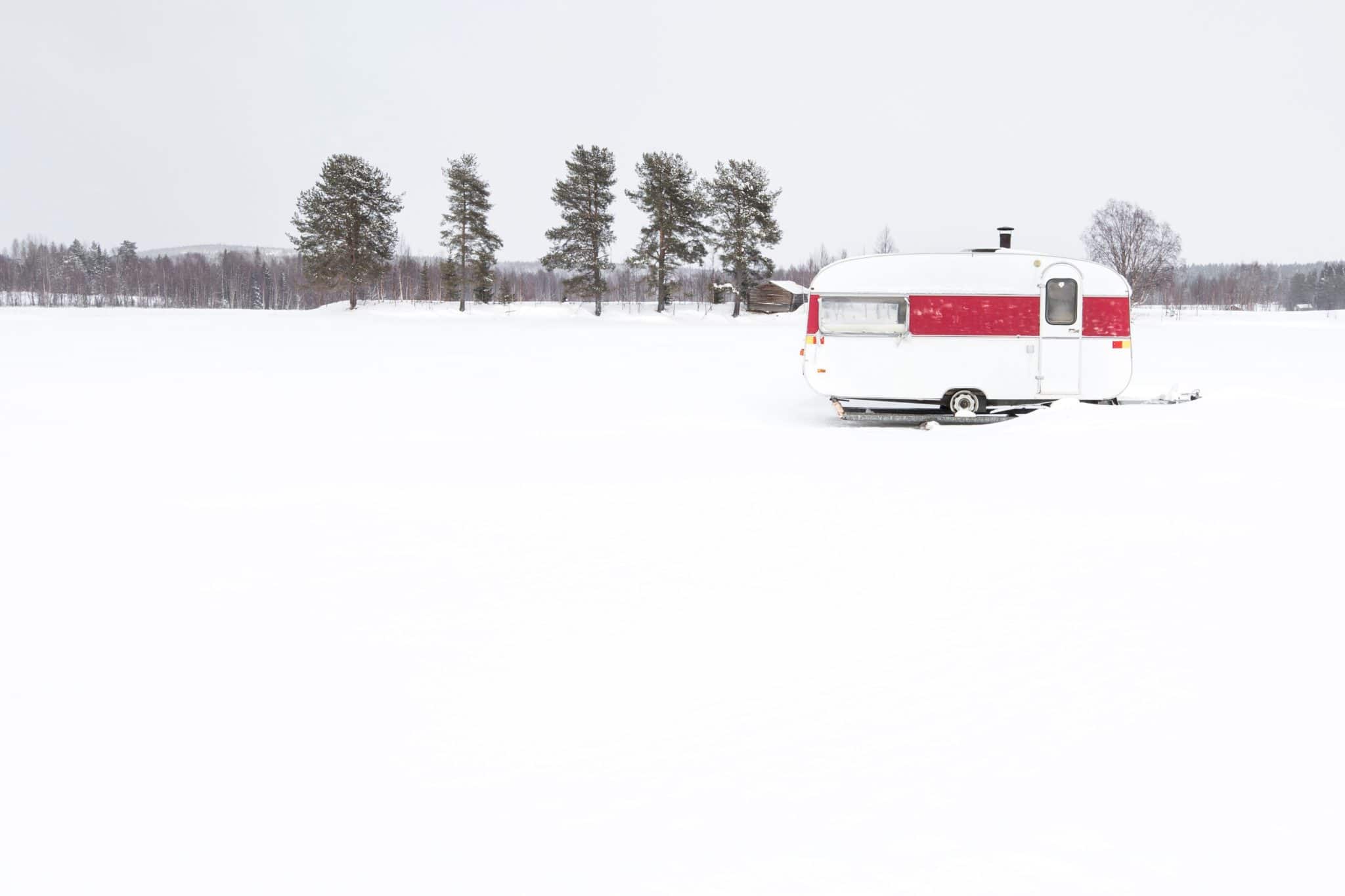Table of Contents Show
RV air conditioner repairs can be costly. Like many other RV repairs, however, repairs can oftentimes be avoided with a base knowledge of how your AC unit operates, some simple reasons why it might not be working, and learning some routine maintenance.
So let’s take some of the mystery out of your RV’s air conditioner.
How Does an RV Air Conditioner Work?
An RV air conditioner works by drawing in hot air from inside your rig. It uses a fan to move it across an evaporator which transfers the heat into the refrigerant, changing it from a liquid to a vapor and cooling the air. It then pushes the now cool air inside the RV through air vents.
The refrigerant vapor is moved through the system to the roof where there is a compressor and condenser. The compressor compresses the refrigerant which turns it back into a liquid and the heat is released through the condenser coils.
It is a closed system where no actual air is added or removed from your RV.

2 Main Systems of an RV Roof Air Conditioner
There are two main systems of an RV air conditioner: the sealed system and the air moving system.
The Sealed System
The sealed system comprises a compressor, a condenser, and an evaporator. These are the components that work together to pull out the hot air from inside the RV and return cool air.
The compressor circulates, heats, and compresses the refrigerant and passes the vapors on to the condenser.
The condenser then pushes the heat out of the RV, cooling the vapors inside of the condenser and turning them back into liquid form.
The cooled refrigerant travels into the evaporator. The hot air inside the RV moves over the evaporator coils, which absorbs the heat and returns cool air to the inside of the RV. The system works the same but backwards if you use it as a heat pump.
The Air Moving System
The second part of the RV air conditioner is the air moving system, which is simply a motor and two fans. The motor powers the fans, one of which moves air across the condenser, while the other moves the air across the evaporator.
Tips for Common RV Air Conditioner Problems
What if my RV air conditioner won’t turn on?
RV air conditioners run on 110V power, so the first step to troubleshooting is being sure that you have 110V power to your rig. See if your 110V outlets are working.
If your 110V outlets are working, check for a tripped breaker. Air conditioner units are power hogs, so it is common to trip a breaker if you have too many 110V appliances operating at the same time.
As an RVer, it’s good to invest in and learn how to use a multi-meter so you can test the voltage coming into your RV, where switches connect, and such, so that you can do some of your own troubleshooting and not constantly be in the repair shop.
If you get past these simple tips, you may have to pay a professional that is experienced in RV air conditioner repairs.
My RV air conditioner won’t keep the rig cool
There are a few different things that can cause your AC unit to stop cooling the interior of your rig.
AGE. We all get older and so does your air conditioning unit. Especially if your AC unit gets used a lot (yes, we’re looking at you snowbirds), it may only last a few years.
IT’S TOO HOT. While the air conditioner is made to cool the inside of your RV, if you are in an extremely hot climate, it’s possible that your air conditioning unit just can’t keep up with the demands put upon it. This is quite common in larger rigs that may require an additional air conditioner to be able to cool the entire RV.
DIRTY COMPONENTS. Most of us, at one point or another travel down that old dusty road. Even if you don’t, dust, dirt, and other contaminants build up on the air conditioner’s components. Pay particular attention to the AC air filters, fins, and coils. If they get too dirty, it can drastically reduce your air conditioner’s efficiency.
PRO TIP. If you’re keeping your AC unit clean, but it still doesn’t quite reach all the places you’d like, you can use simple 12V or battery-operated fans to better circulate the air in your rig. This can not only increase your comfort but might potentially take some of the stress off of your air conditioning unit, extending its life.
How to Clean Your RV Air Conditioner Unit
Dirt and grime is something that is simply a natural occurrence, thus cleaning is an important part of the routine maintenance that can help you avoid a costly RV air conditioner repair. To be safe, make sure you cut the power to your AC unit before cleaning.
Cleaning the filters
Access the air filters from inside your RV by removing the bezel where the air flows out from the unit into your rig. Remove any air filters and gently clean them with warm water. Inspect them for any tears and replace damaged filters.
Be sure any filters are completely dry before you reinstall them. But before you reinstall the filters, don’t forget to clean the evaporator coils.
Cleaning the evaporator coils
With the air filter out of the way, you should be able to access the evaporator coils. Use a vacuum cleaner with a brush attachment to gently scrub any dirt or grime off of the evaporator coils and suck it up with the vacuum.
Cleaning the condenser coils
The condenser coils are a bit more of a chore to clean, but if you’re okay with safely getting on top of your RV’s roof, it’s not difficult.
Once on the roof, unscrew the bolts and remove the protective shroud from your air conditioning unit. With the shroud out of the way, use your vacuum cleaner to clean any dust.
With the dust off of the condenser coils, use a cleaning product made specifically for air conditioner condenser coils. Follow the instructions on the packaging, making sure that you don’t damage the coils.
Once cleaned to the packaging’s specifications, replace that shroud and be sure to bolt it back down. The last thing you need when you head out is to see your AC unit’s shroud go crashing down the road behind you.
You’ve Avoided Costly RV Air Conditioner Repairs
As you can see, there’s really not a lot to maintaining your RV’s air conditioning unit. Simply understanding how it works and why it might not power up can save you a lot of time and money.
Taking it a step further and doing your own routine maintenance, keeping the components clean, will benefit you even more. Cleaning the filter and coils every couple of months – or perhaps monthly if you’re using it a lot or in a dusty area – will help avoid repairs and extend the life of your unit.
An air conditioner will last much longer if it isn’t constantly stressed when operating. And you won’t be stressed out by the heat if your AC is working well.






